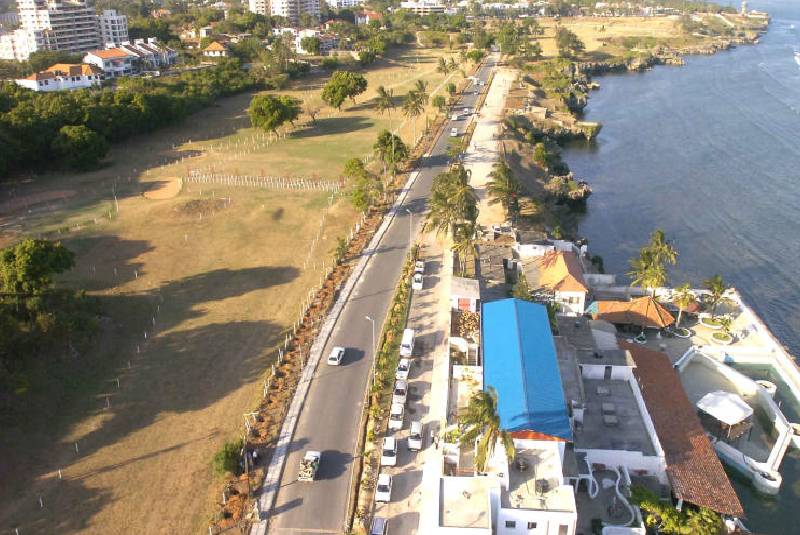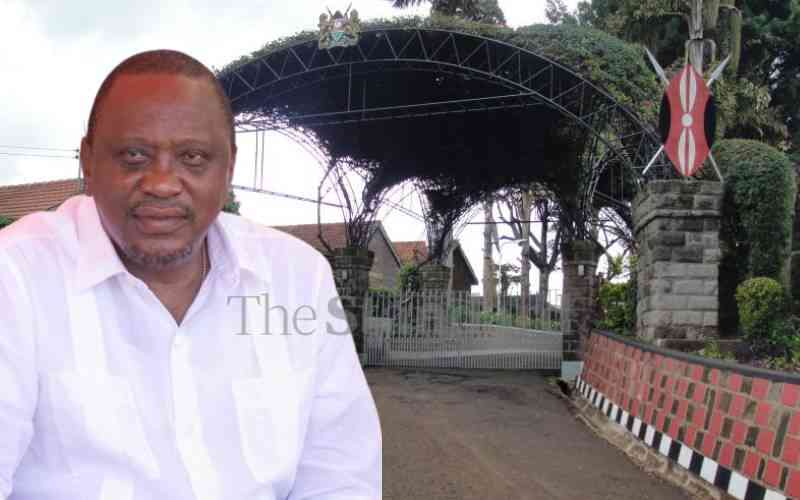
To many people, Mama Ngina Drive Public Park (pictured) is just an exotic spot where hundreds of people congregate every day to relax and picnic with their families.
Beneath the exotic park, however, are ancient archeological remnants that archeologists say provide an important lesson about the development of the port city of Mombasa.
“There is archeological evidence to prove that Mama Ngina was the foundation of the city (Mombasa),” says National Museums of Kenya Deputy Director Athman Hussein.
Oral and archeological accounts indicate the place was ancient settlement for Waswahili of Tauca or Wakilindini, which in the 15th century split into three communities; Wachangamwe, Wakilindini and Watangana.
And now earth movers are roaring at the park after President Uhuru Kenyatta commissioned the construction of a modern waterfront.
The upgrade dubbed ‘Mombasa Waterfront Project’ is expected to transform Mama Ngina Drive, situated on the southern part of Mombasa Island near Likoni channel, into a recreational park.
Tourism Cabinet Secretary Najib Balala says the project will transform and rejuvenate Mombasa into a leading and competitive world class tourism destination.
“We will conserve Swahili and Coastal culture and heritage structures of significance in the re-design of the area,” says Balala, adding that the project will cost Sh460 million.
According to the designs, the facility will have two iconic gateways to the waterfront, paved pathways, lush gardens and restaurants that will edge out kiosks.
There will be a paved boardwalk at the waterfront, creating the perfect environment for exercising, serene walks and outings for the public.
At the west of the facility a 1,000-seat amphitheater and a heritage epoch dubbed Kilindini Cultural Centre will be built.
There will be three public squares, one of which for presidential use, designated five pigeon nests and noticeable murals for aesthetic value.
Near the Likoni channel crossing a new jetty for water taxis and living boat museum will also be constructed, according to the designs. The structures will be constructed using dressed coral stone, Swahili-style lime plaster, precast concrete screens, hardwood timber for screens and frames and mangalore tiles for roofing.
To have a complete ancient Swahili fusion design, the structures will have aluminium mabati and sisal poles, and boriti poles for the construction of kiosks.
Stay informed. Subscribe to our newsletter
“It will also have traditionally crafted Swahili decorative elements such as vidaka and decorative plaster,” says Balala.
It is envisaged that the facility will spur a 24-hour economy as it will have open air/al fresco restaurants and cafes, fun park and water sports.
Yesterday, Balala said the waterfront will be managed by an independent body set up by the Ministry of Tourism and Wildlife and that entry will be free of charge.
 The Standard Group Plc is a
multi-media organization with investments in media platforms spanning newspaper
print operations, television, radio broadcasting, digital and online services. The
Standard Group is recognized as a leading multi-media house in Kenya with a key
influence in matters of national and international interest.
The Standard Group Plc is a
multi-media organization with investments in media platforms spanning newspaper
print operations, television, radio broadcasting, digital and online services. The
Standard Group is recognized as a leading multi-media house in Kenya with a key
influence in matters of national and international interest.
 The Standard Group Plc is a
multi-media organization with investments in media platforms spanning newspaper
print operations, television, radio broadcasting, digital and online services. The
Standard Group is recognized as a leading multi-media house in Kenya with a key
influence in matters of national and international interest.
The Standard Group Plc is a
multi-media organization with investments in media platforms spanning newspaper
print operations, television, radio broadcasting, digital and online services. The
Standard Group is recognized as a leading multi-media house in Kenya with a key
influence in matters of national and international interest.









